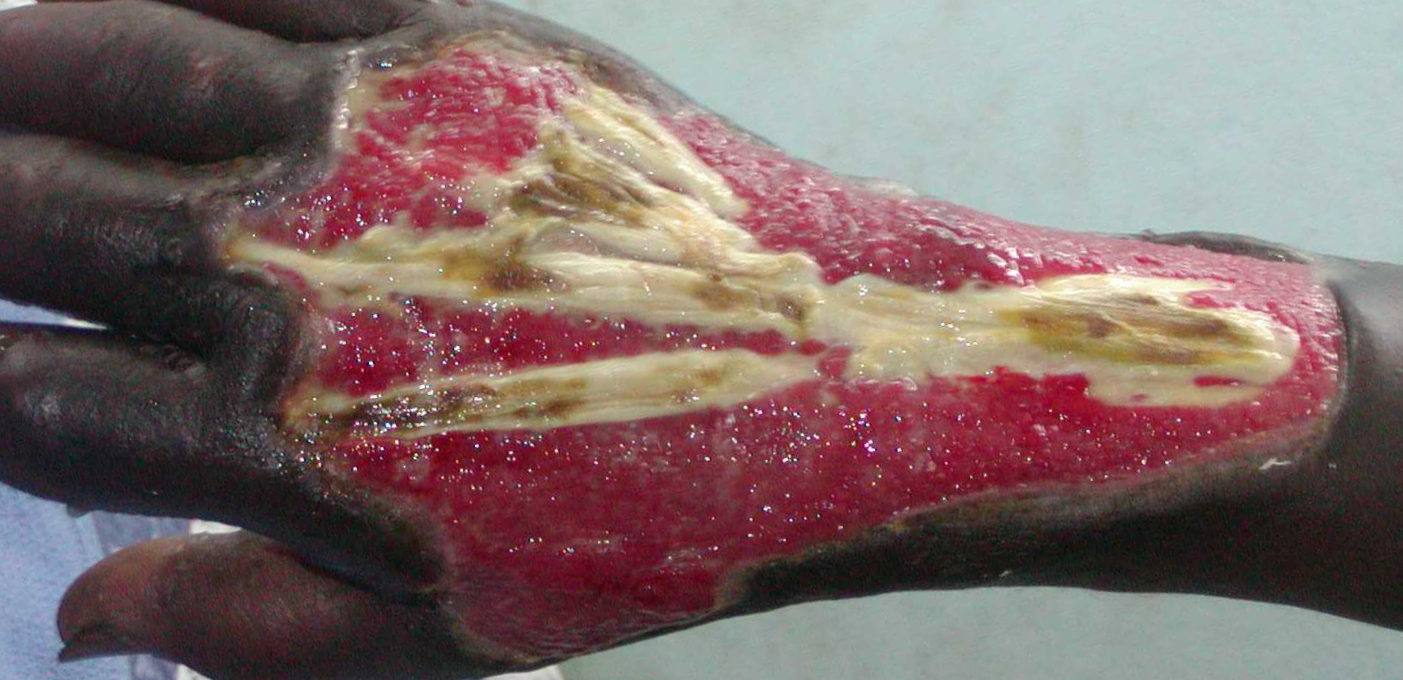Linda Benskin, RN, BSN, Ghana_SRN, Church of Christ Mission Clinic, volunteer nurse, 11304 Prairie Dog Trail, Austin, TX 78750-1322 and Peter Bombande, Ghana_SRN, Church of Christ Mission Clinic, Clinic Director, PO Box 137, Yendi, N.R., Ghana.
Herbal poultice applied by shaman for abscess produced third-degree chemical burn to dorsum of hand extending up arm totaling 17.5cm. Middle-aged male presented at clinic after no treatment for three weeks. Exposed tendons were dark brown and foreshortened; copious foul drainage from 8cm long tunnel. Surgical intervention (in rural northern Ghana) unavailable; petrolatum-gauze supply exhausted after four weeks treatment. Patient needed to farm using locally-made hoe during treatment; severe pain hindered his grip. Dressing needed to reduce pain, be elastic (to stay in place), provide moisture to exposed tendons and muscle, and absorb exudate from tunnel while decreasing infection. Polymeric membrane dressings have demonstrated ability to reduce pain and inhibit infection, are flexible and donate moisture while absorbing excess drainage. Clinician had observed immediate granulation tissue formation in previous stalled wound using polymeric membrane dressings, so these were initiated. Treatment included teaching, prayer, oral antibiotics and direct wound care. Standard polymeric membrane dressings were changed every two-to-three days when saturated. Heavy manual farming resulted in copious serous drainage, requiring daily dressing changes. Tunnel treated with triple antibiotic ointment-soaked packing strips. Initially wound was cleansed when dressings were changed. After thicker polymeric membrane dressings became available and tunnel healed, wound cleansing was necessary only when wound became grossly contaminated. Patient resumed farming shortly after treatment initiation, continuing throughout treatment. Granulation tissue formed quickly and wound moisture became appropriate without infection spreading. Wound healing was slowed due to wound contamination and trauma during farming, inability to keep hand elevated, dressing being wet constantly during the rainiest month, a broken wrist, and severe protein malnutrition. None-the-less, wound healed completely with adequately functional hand and wrist in 56 weeks. Polymeric membrane dressings provided effective wound management for a third-degree chemical burn. Use of thicker polymeric membrane dressings decreased necessity of wound cleansing.

See more of Case Study Poster Abstracts
See more of Case Study Abstracts
See more of The 38th Annual WOCN Society Conference (June 24 -- 28, 2006)

